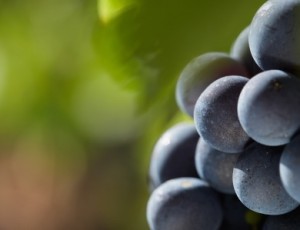Today, instead of wine I wish to discuss wine lists. They come in all sizes varying from one brief page to colossal coffee-table books. A recent article in the Food & Wine section of the Sunday San Francisco Chronicle announced that massive encyclopedic wine lists are going the way of Britannica. Most restaurants are simplifying and shortening their lists to make the experience less confounding. The new ideal is that of the wildly popular Cotogna, the little-sister restaurant to Quince, where a carefully selected, small list is comprised of bottles that carry the same price: $40. It can’t get any simpler than that.
The managers of Acquarello have obviously not bought into this trend. Their perennially encyclopedic list, one of the most exhaustive collections of Italian offerings, is currently at 93 pages. Located between Van Ness & Polk, on Sacramento, in the Russian Hill neighborhood of San Francisco, Acquarello is, in my opinion the most elegant upscale Italian restaurant in the City. A chapel-like dining room, sparsely populated with tables far enough apart that you don’t become best friends with the couple at the next table, Acquarello features a quiet, attentive and stately service. The food is outstanding, and the wine service down-to-earth despite the intimidating wine list.
When I first went to Acquarello about five years ago, their strategy to make the list easier to decipher was to add a varietal composition in percentages after each label. It didn’t help much because Italy has so many obscure varietals. I bet most novices went to anything that included the words Sangiovese, or Merlot on it. That first encounter with their wine list was quite memorable for me, because I was stunned. I thought I knew about wine, and all I could recognize were Barolo and Chianti. There were countless others which I had no idea about. I blindly chose a Montepulciano d’Abruzzi on that occasion and it started my exploration of Italy.
Now with a wider knowledge of this country, I can approach their list with more ease. But to my delight, I have noticed that they’ve changed their list. Gone are all those chemistry-like compositions. Instead they have placed brief paragraphs explaining each region or subregion. The list features numerous well known producers such as Conterno or Gaja, and they are also imtroduced with a brief paragraph. Since their offerings cover every area of Italy, fromValle d’Aosta near the French Alps to Sicilia and Sardegna and everything in between, this is now encyclopedic in the true sense of the word.
What is one to do when seated in such a restaurant with limited time to decide on a meal and choose wine? There clearly is no time to study such a huge list in detail. Here’s where the internet comes in handy. The best way to view such lists is on the restaurant’s web site while still at home. I did that both before I went there, to choose sections within the list to focus on while seated, and after my dinner for several days, now to learn from the list. It is a wonderful summary of what Italian wines are all about. A little homework goes a long way.
As a result I was able to be adventurous and steer clear of well known regions. In my recent dinner there for a white I ordered a Fallanghina from Puglia (I did not even know this region produced Fallanghinas); it was quite different than those of Campagnia which are better known. For red I got a Taurasi, which is made of Aglianico in Campagnia. Both were wonderful and complemented the meal well. What’s more, both were quite reasonably priced in two digits when most of the list is in three or four.
Trends come and go, and whether the current one towards shrinking wine lists will last is difficult to tell. But in my opinion, serious upscale restaurants are likely to maintain lists like that of Acquarello, which have their own unique character, with specialty emphasis, depth, and hopefully educational potential, even for wine snobs like myself.








